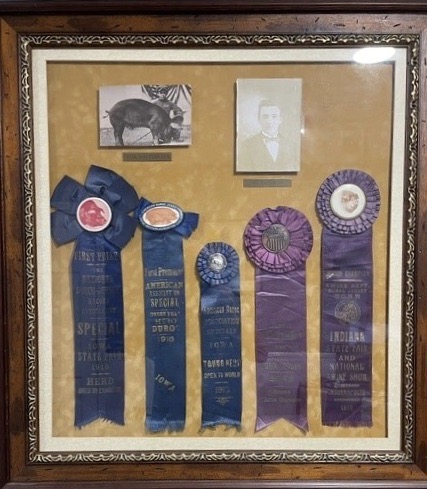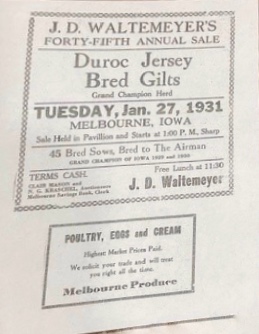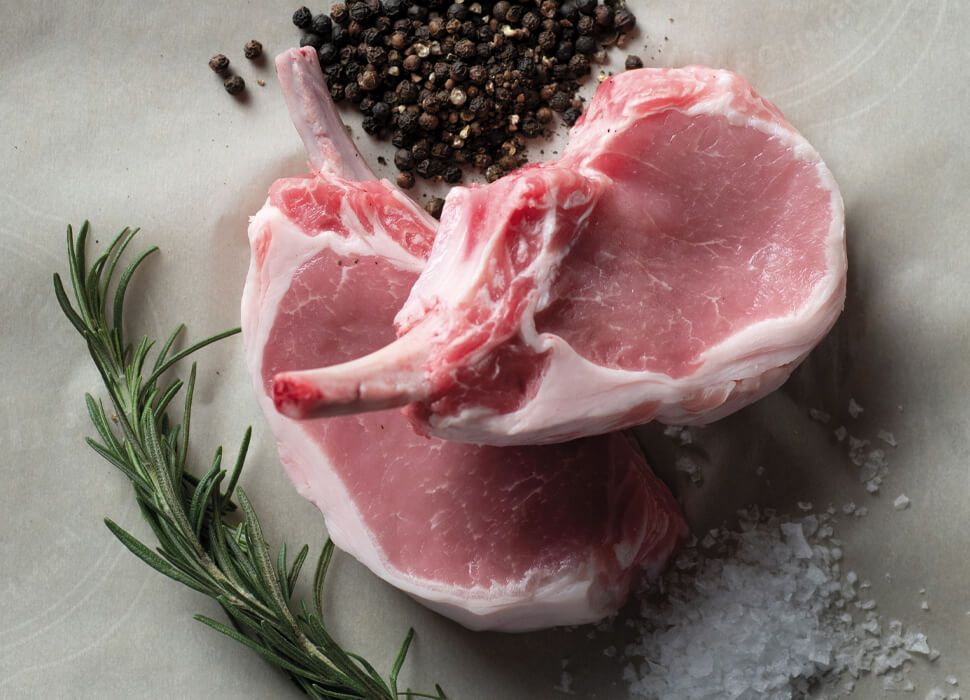If you’ve ever tasted a juicy, tender, full-of-flavor Coleman Heritage Duroc pork chop, then you know how special it is. It’s a far cry from the bland, exceedingly lean and dry pork once known as “The Other White Meat.”
For nearly 150 years, Coleman All Natural Meats has been dedicated to producing nutritious and delicious meats from animals raised on American family farms that focus on the well-being and health of their animals. Our famers never use antibiotics or hormones and they never use confining crates for gestation or farrowing.
That devotion to quality has served our customers well since the beginning, and its why Coleman uses the Heritage Duroc breed in all its pork products.
What is Heritage Duroc pork?

What, you may be asking, is Heritage Duroc pork? The Duroc is an American breed of pig known for its tenderness, marbling, juiciness, and flavor. In short, it delivers an all-around great eating experience.
The Duroc is also popular with hog farmers because of its superior feed efficiency—the ratio of weight gain to the amount of feed consumed—along with its resilience and durability, especially when it’s humanely raised.
The History of Heritage Duroc pork
The breed we call Duroc today developed in New England in the early 1800s, a cross-bred combination of Jersey Red and wild red hogs from Northern Africa. They became known as New Jersey Red Duroc around 1880 when the recording association of pedigrees was organized, according to Dave Waltemeyer, Coleman’s resident Duroc expert.
By that time, improved hog breeds of all kinds were all the rage at state fairs in the Midwest, and in the early years of the 20th century, breeders like Jacob Waltemeyer, Dave’s great uncle, refined the Duroc genetics to deliver mostly red, floppy-eared hogs with docile natures, muscular bodies, easy and prolific breeding characteristics, and the ability to grow quickly on less feed.
The quality of the meat was also a big selling point. The Duroc became known for its marbling and big meaty flavor.
Dave Waltemeyer says that one of his uncle’s lines, known as the Golden Model, had the best genetics of that time. “Those older breeders established the foundation for the good genetic lines we have today,” he said.
The Coleman Connection to Duroc History


Dave Waltemeyer began raising Durocs on his family farm in Central Iowa when he was 14. It was a Future Farmers of America project, but it was also a connection to his Great Uncle Jacob. The younger Waltemeyer still has many of the trophies and ribbons his uncle claimed for raising Grand Champion Duroc hogs during his years as a breeder, along with several of his own from his days raising the breed for high school and post college competitions.
Jacob was well-known and successful—he even had his own train car to transport his pigs to various state fairs and national shows. Unfortunately for Jacob, the Great Depression destroyed his business, even as the Duroc became the breed of choice for most farmers.
The Duroc Today
In the 1970s and 80s, circumstances like the farm crisis, a disease outbreak, and the rise of large genetic breeding companies combined, limited the independent Duroc breeder production. The popular Duroc was then replaced by white breeds on the female side known for their lean meat and adaptability to confinement while the male side remained Duroc. Soon the Duroc and other heritage breeds were largely reduced to being show pigs, bred for novelty more than anything else.
Eventually, consumers started to revolt against The Other White Meat. No one wanted to eat tasteless, dry pork, and the genetics in the heritage hog breeds were sought after to improve the quality of the chops, ribs, and loins in the grocery store meat case. “There was a time in the 90s and early 2000s where they got pigs too lean and the product wasn’t as tender and juicy. It was too dry,” said Waltemeyer. “But now we’ve got a happy medium. You have to have that marbling for the taste.”
Why is Coleman Heritage Duroc Different?
Many companies use Duroc genetics in their breeding programs, so what sets Coleman’s Heritage Duroc apart from its competitors?
First of all, every hog that enters the Coleman program comes from an American family farm where humane animal treatment is the first order of business. Every farm is American Humane Certified, a program that adheres to the Five Freedoms of Animal Welfare: freedom from hunger and thirst; freedom from discomfort; freedom from pain, injury, or disease; freedom to express normal behaviors, and freedom from fear and distress.
All Coleman farms adhere to California’s Prop.12 and Q3 in Massachusetts, meaning sows and their piglets have plenty of room to move around. Our farms never use antibiotics, added hormones, or other growth promotants, and all of our pigs are fed a diet of healthy, nutritious, all vegetarian feed.
Coleman products are also all natural, meaning they contain no artificial ingredients and they’re minimally processed.
You can find Coleman All Natural Meats’ Heritage Duroc Pork wherever Coleman products are sold.
The Coleman Way, since 1875, is our commitment to quality, taking pride in humanely raising animals on family farms in the U.S.A. with no antibiotics ever, no growth hormones, and 100% vegetarian fed. The result is premium, great-tasting, all-natural meats in a variety of cuts and flavors that can be easily prepared and that you can feel good about serving to family and friends.



